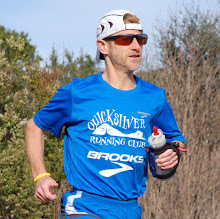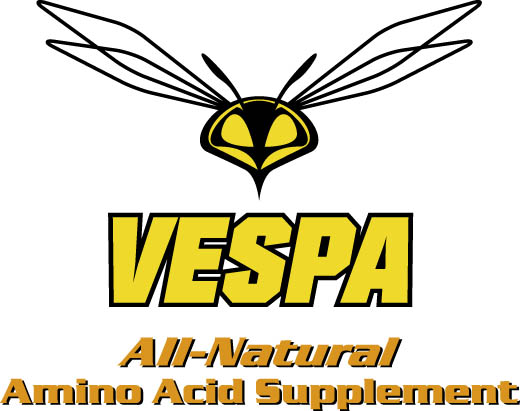
The contingent participating from the US this year is formed of 29 runners on the UTMB (100-milers) and 9 on the CCC (Courmayeur-Champex-Chamonix, the 50-miler). Slightly more than 1% of the field.
See my UTMB training camp photo album for a full and visual coverage of the event.
The initial program was the following:
- Chamonix - Courmayeur (Refuge Bertone), 82 km, starting at 6:30 pm on Monday (the actual race starts at 6:30pm, from Chamonix)
- Refuge Bertone - Champex, 40 km, Wednesday
- Champex - Chamonix, 41 km, Thursday

- Chamonix - Notre Dame de la Gorge, Monday night
- Lac Combal - Refuge Bertone, Tuesday (by car from Chamonix to the Val Veni)
- Refuge Bertone - Champex, Wednesday
- Champex - Chamonix, Thursday
- Notre Dame de la Gorge - Courmayeur, Friday

- The Chamonix - Les Houches section is partly road and nice trails, downhill. With all the excitement of 2,000 runners taking off, don't get caught in a too fast start!
- From les Houches, it's straight uphill, be prepared to walk up to the Voza pass
- The faster runners will need their flashlight at the pass, the others somewhere in the uphill
- You'll get on a road before St Gervais, steep downhill. After 9 turns/switchbacks, you should "jump" in a narrow and even steeper street (Montée de la Forclaz), almost a free fall into the main streets of St Gervais
- Before the next steep and long uphill to the Col du Bonhomme, you will pass Notre Dame de la Gorge: a typical church of this area, built hundreds years ago for hikers seeking protection before getting in and up the pass. Worth thinking about it for yourself on race day and ask Mary for her support. (By the way, a subscription has been launched to raise 1 million dollars to restore the site.)
LA BALME - COURMAYEUR
- Just before the pass (Col du Bonhomme), there should be a patch of snow (névé), which you need to cross at the bottom (from left to right) to find a steep and rocky (large blocks) trail on the right of the snow. Quite tricky at night.
- The pass is not the end of the climb, there are still 1 mile and 450 feet elevation gain to the Croix du Bonhomme. Yet, the pass can be windy so plan on putting a layer on which you'll take off at the Refuge of Croix du Bonhomme, before descending to Les Chapieux.
- I found the downhill to Les Chapieux particularly tricky and hectic in some parts, with very steep and slippery (brittle rocks) sections. Moreover, even in day light, the trail is not easy to find, with many options and traces, not all good. Be carefull as you proceed in this section in the dark, look ahead and... good luck!
- There are some recommended/planned shortcuts before Les Chapieux, make sure not to miss them. There are steep though, hence not so good for your quads.
- 3 miles of up road (asphalt) after Les Chapieux: don't spend too much in the station, grab some stuff which you can eat and drink while walking. But make sure to take enough food with you to get the necessary fuel for the 6-mile and 3,000ft ascent to the Col de la Seigne.
- The trail after Elisabetta (the refuge) is large but rocky. Make sure to not miss this other recommended shortcut saving you a few unnecessary turns.

- Trient - Les Tseppes: not as long as some other ascents, but really, really steep. Don't miss the food offered at the Trient aid station, you'll need every calorie you can intake then.
CHAMPEX-LAC - CHAMONIX
Again, not too many tricks here, as you are getting to the end of your long journey.
- Col des Montets: the uphill is gradual and much easier than what you've accomplished so far. As you go though the pass and think you are done, make sure to keep some juice for the last uphill between Argentière and Le Lavancher. After it, you are mostly done, CONGRATS!
Again, more (176!) pictures about this incredible scenery can be found in my album.
General tips
- Aid stations. This is really the most important topic in my opinion. They are much fewer than in most ultras in the US
- Poles and backpack. Poles are heavily used by French/European runners, especially on this course. Telescopic or not. And mainly used for the uphills, as it requires a lot of experience to efficiently use them in the steep downhills. Since you need to pack quite some stuff (see list of mandatory items), a Camel Back is a reasonable option, freeing the hands from the bottles, and providing the opportunity to use poles to unload some weight from the quads in the uphills. Another option is to have bottle holders on the straps of the backpack, which allow for one (small) bottle of water, and one of electrolyte. They (Lafuma, Salomon) have great ultra running backpack in France. Note that you need to learn how to efficiently strap your poles at the back of the backpack so they don't bother you while running the downhills.
- Sport drinks. No electrolyte at the aid stations, you need to carry your own powder and make your own mixture on the go. And don't forget there will be hundreds of other runners with you at the aid station, so no personal service for the runners in the pack.
- Running shoes. Quite a few miles of road, so you need some cushioning. However, the most important is stability and grip as there are quite a few technical and slippery rocky sections.
- Weather. Can be bad. Very bad. Meaning rain, storm, and/or cold. Hence the mandatory items such as rain coat/vest and tights. I've experienced such weather, so I second the need to carry such items.
- Crew. I don't have a solution actually, just a feeling that this can be a nightmare. As for any ultra, you won't know where your runner is. You can imagine the difficulty to park with 2,000 runners on the course. Driving around the massif of Mount Blanc is not easy (high altitude and remote passes, roads with switchbacks). You should set your "headquarters" in Chamonix. You can then drive to Saint Gervais (30 minutes). I would skip Les Chapieux and go directly to Courmayeur through the tunnel (take a round-trip ticket), then drive back to Chamonix, from where you can drive to Switzerland. In any case, check the official Road Book for more instructions.
- Difficulty. From what I've heard, the UTMB is easier than Hardrock, with a slightly lower altitude (3,000-7,500ft). And from what I've experienced, it's much tougher than Western States, with the numerous steep ascents and quite a few tricky sections. Will be interesting to see what the contingent of outstanding runners coming from the US can achieve in comparison with their performance overthere.
- Drop bags. From what I read in the Road Book, you are only allowed two drop bags (Courmayeur and Champex). With the need to get your own electrolyte thoughout the race for instance, this makes a (good) crew a real advantage.
Encounters
In addition to the great people I met in our "training camp team", it was fun to meet some celebrities on the course:
The Misubishi racing team, famous for their performance in the Paris-Dakar and many other rallies. The team was hiking around the Mont Blanc as a team building event. When we passed them and they recognized Karine, Luc Alphand picked up the pace and followed us to the top of Col de la Seigne. Luc is famous in France for 12 world cups in downhill skill. His ahievements in rally, both motorbike and automobile, represent an outstanding and unique reconversion between the two sports.
At Refuge Bertone we met Vinvent Delebarre and Samuel Bonaudo. They were leading an organized UTMB training camp with 16 runners, in 4 stages. Vincent has won the UTMB in 2004, and many other ultras. He was born in Chamonix, and works as mountain guide in the army. As for Samuel, he is known for his high school National title on 1,500m, and has recently switched to trail running where he should do very well too. In the picture below, after the supper at Refuge Bertone, Vincent teaches us how to say "La Peule", not la Pelaz, the name of the refuge we'll have lunch tomorrow.
In les Chapieux, on Friday, we were welcomed for a great lunch by the owner of the Auberge, Marie Arpin, whose brother, Paul, was an elite runner. He was training in the neigborhood mountains, being a sheperd, so was exceling at cross-country and trail running, but also on roads (2:11 marathon). He placed 3rd at the IAAF world cross country championship, behind two Kenyans. There is no question he would have done extremely well on the UTMB course, would the course have existed in the 80s.







.jpg )

7 comments:
Check out this report from last year.
http://aislingsblogpage.blogspot.com/2006/11/ultra-trail-tour-du-mont-blanc-august.html
very nice description and tips.
thanks
anil
Interesting!
You are right Anne-Marie and François the cook like to treat people very well.
Olivier
For anyone doing the 86K CCC, here is an account of last years run, with much better weather than has been experienced so far this year.
http://www.rathfarnhamwsaf.com/results/The%20North%20Face%20Ultra.pdf
Jean:
Great report - thanks for all the hints!
CCC is now around 100k. I measured it with GPS in 2008 and this year it was 105k. Quite a bit more than advertised :-)
Who knows where to download XRumer 5.0 Palladium?
Help, please. All recommend this program to effectively advertise on the Internet, this is the best program!
Post a Comment